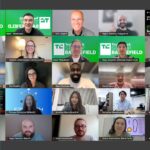In the world of sales and marketing, the concept of a one-day sales cycle might seem like a pipe dream. However, as David Skok recounts in his series on Building a Sales and Marketing Machine, this seemingly impossible feat was not only achieved but also became a pivotal moment in his entrepreneurial journey. This article delves into the story behind the one-day sales cycle and the lessons that can be gleaned from this innovative approach.
The Challenge of a Long Sales Cycle
In 1983, David Skok found himself at the helm of a startup selling CAD systems to architects. The sales cycle was a grueling nine months, a period filled with educating customers about CAD, showcasing drawings from other clients, arranging customer references, navigating tax implications, and securing financing approvals. The entire process was a complex and often opaque black box, making it difficult to identify what was working and what needed improvement.
The Engineering Mindset Applied to Sales
With an engineering background and no formal sales or marketing training, Skok approached the problem with a disciplined, analytical mindset. He identified the key components of the sales cycle and sought to streamline and accelerate each step. The result was a groundbreaking one-day sales cycle event designed to address all the elements that typically stretched the process over months.
The One-Day Sales Cycle Event
Location and Messaging
The event was held at a high-class resort, creating an impression of a much larger and more established company. The challenge was to craft a message that would attract the target audience—architects and their spouses. Skok realized that focusing on education and the opportunity to network with other architects who had adopted CAD would be more compelling than emphasizing the luxurious location.
Breaking the Ice
To overcome the cultural barrier of South African businessmen being shy and unlikely to engage in conversation, Skok hired a well-known stand-up comedian to break the ice. The comedian’s humor set a positive tone, transforming the atmosphere and making the audience more receptive.
The Presentation
The event featured a dramatic presentation using state-of-the-art technology for the time, including slide projectors, video projectors, and a computer-controlled laser. The presentation humorously illustrated the potential of CAD, making the technology accessible and exciting. This not only educated the audience but also showcased the company’s capabilities, making it appear much larger and more established than it actually was.
Educational Lectures and Practical Solutions
The following day included a series of educational lectures on CAD, ROI analysis, tax implications, and financing options. The event concluded with a display of CAD drawings from existing customers and a demonstration of HP’s Shared Resource Manager, addressing the networking challenge head-on.
The Unexpected Success
By the end of the event, the company had received $4 million in orders, more than the entire revenue from the previous year. This success was not anticipated, and the team had to quickly adapt to handle the influx of orders. The event not only demonstrated the power of a well-orchestrated sales cycle but also highlighted the importance of being prepared for success.
Lessons Learned
Understanding the Customer
The key to the one-day sales cycle was a deep understanding of the customer’s needs and pain points. By addressing these directly and providing a comprehensive solution in a single event, Skok was able to compress a nine-month sales cycle into a single day.
Creating a Compelling Experience
The event was designed to be engaging and educational, using humor, technology, and peer testimonials to create a compelling experience. This approach not only informed the audience but also built trust and credibility.
Being Prepared for Success
The unexpected success of the event underscored the importance of being prepared to handle the outcomes of a successful sales strategy. Quick thinking and adaptability were crucial in converting the interest generated into actual sales.
Applying the One-Day Sales Cycle Today
While the specifics of Skok’s event were tailored to the technology and market of the 1980s, the principles remain relevant today. Understanding your customer, creating a compelling and educational experience, and being prepared to handle success are timeless strategies that can be applied to any sales process.
Practical Steps for Modern Businesses
- Customer Research: Invest time in understanding your customer’s journey and pain points.
- Event Planning: Design events or experiences that address these pain points comprehensively.
- Technology and Innovation: Use the latest technology to create an engaging and memorable experience.
- Preparation: Ensure your team is ready to handle the interest and orders generated by your efforts.
Conclusion
The one-day sales cycle is not just a historical anecdote but a powerful lesson in the potential of innovative sales strategies. By understanding and addressing the customer’s needs in a comprehensive and engaging manner, businesses can significantly accelerate their sales cycles and achieve remarkable results. David Skok’s experience serves as a reminder that sometimes, thinking outside the box can lead to extraordinary outcomes.








